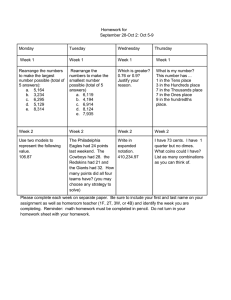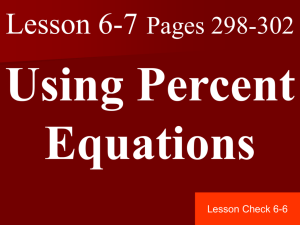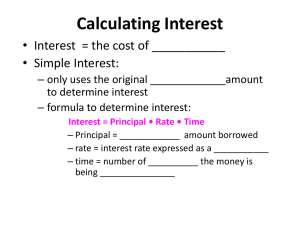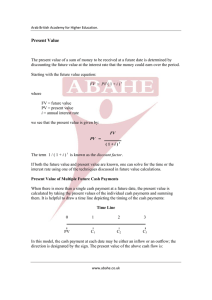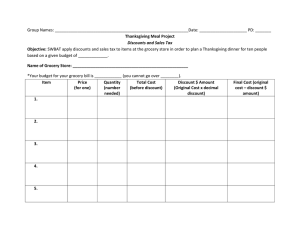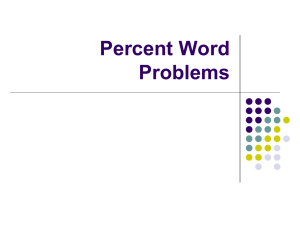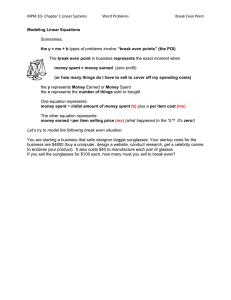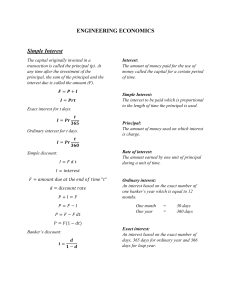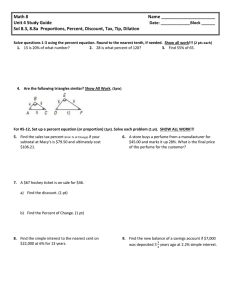Basic Definitions Chapter 4
advertisement
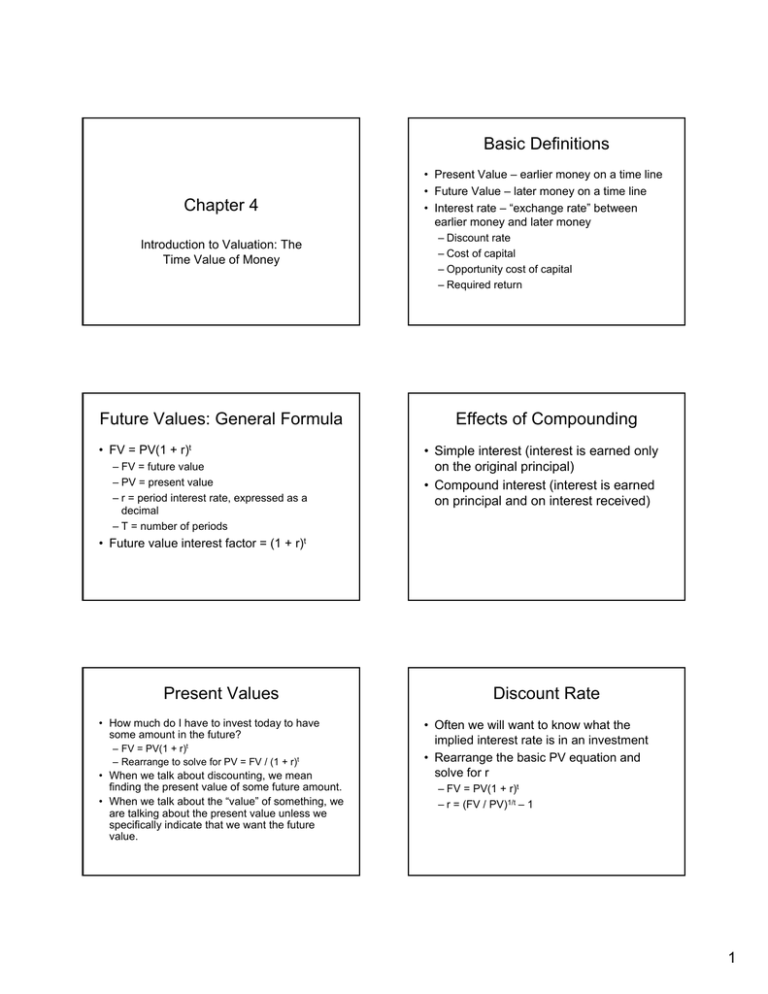
Basic Definitions Chapter 4 Introduction to Valuation: The Time Value of Money Future Values: General Formula • FV = PV(1 + r)t – FV = future value – PV = present value – r = period interest rate, expressed as a decimal – T = number of periods • Present Value – earlier money on a time line • Future Value – later money on a time line • Interest rate – “exchange rate” between earlier money and later money – Discount rate – Cost of capital – Opportunity cost of capital – Required return Effects of Compounding • Simple interest (interest is earned only on the original principal) • Compound interest (interest is earned on principal and on interest received) • Future value interest factor = (1 + r)t Present Values • How much do I have to invest today to have some amount in the future? – FV = PV(1 + r)t – Rearrange to solve for PV = FV / (1 + r)t • When we talk about discounting, we mean finding the present value of some future amount. • When we talk about the “value” of something, we are talking about the present value unless we specifically indicate that we want the future value. Discount Rate • Often we will want to know what the implied interest rate is in an investment • Rearrange the basic PV equation and solve for r – FV = PV(1 + r)t – r = (FV / PV)1/t – 1 1 Finding the Number of Periods • Start with basic equation and solve for t (remember your logs) – FV = PV(1 + r)t – t = ln(FV / PV) / ln(1 + r) 2

